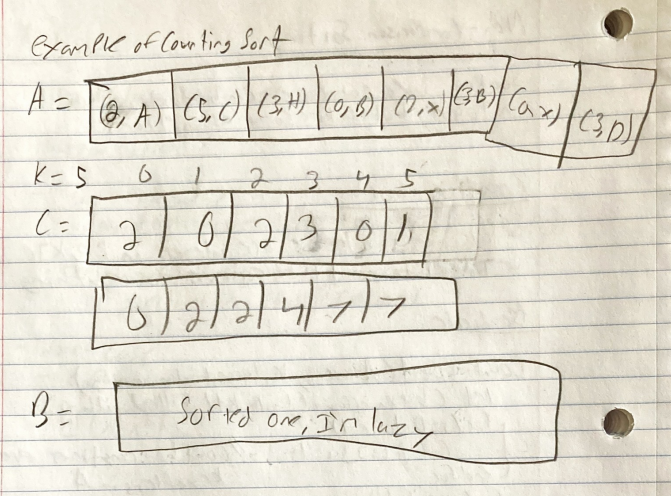#Sorting#Computer-Science#CS251 Sorting without compares can be faster than , but it usually takes some assumptions
Counting Sort
Counting sort assumes that the keys are integers within the range [0, k] The idea is to count the frequencies of everything
Pseudocode
CountingSort(A: array, k: largest value in array)
let C be an array of length k+1 filled with 0's
for (i = 0 to n-1)
C[A[i]] += 1 // count how many times every key appears in A
end for
for (i = 1 to k)
C[i] <- C[i] + C[i-1] // offset values in C to get the indices they'll go at
endfor
let B be an array of size n
for (i = n-1 to 0)
B[C[A[i]]-1] <- A[i] // figure out where the curent key is
C[a[i]] -= 1 // put into a new array at position C-1, subtract 1 from C for next time
endfor
return B
end CoutingSort
Details
This algorithm is not in place
Counting Sort is
It only considers one dimension when sorting values and requires keys of integers [0, k]

Radix Sort
A sort to sort multiple tuples worth of data
(4, 7, 9, 1) (4, 7, 9, 2) (5, 3, 2, 0) (5, 5, 5, 5) These tuples are sorted in lexicographic order
Lexicographic Order
is true if and only if
Pseudocode
RadixSort(A: array of tuples with dimesnions d)
for (i = d to 1)
use a stable sort on A at dimension i
endfor
end RadixSort
Example
